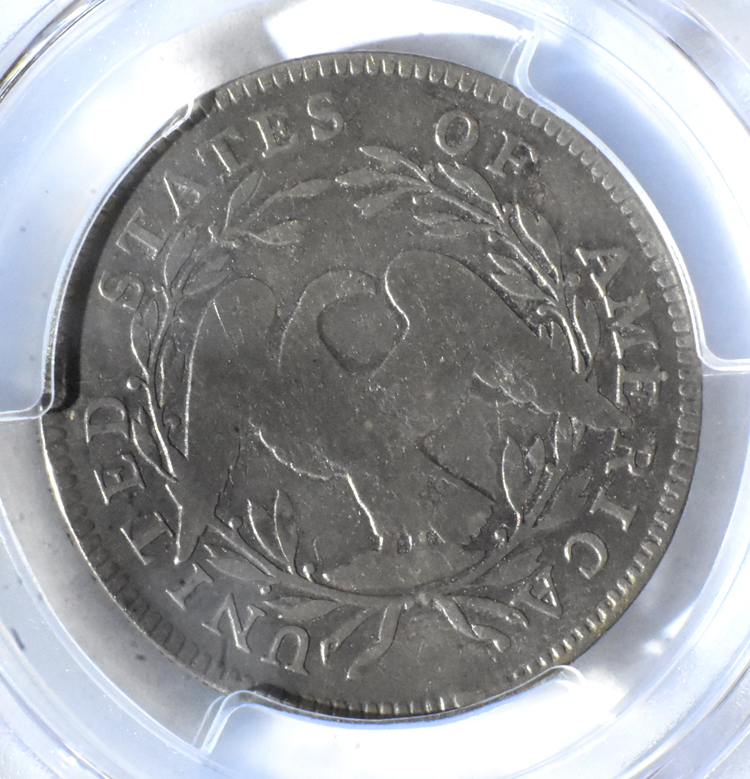Flowing Hair Half Dollar
1794 - 1795
 |
The Flowing Hair half dollar was first minted in Philadelphia in December of 1794 and 23,464 were made in that year. The engraver was Robert Scot and the coin was 89% silver and 11% copper, being 32.5 mm in diameter and weighing 13 1/2 grams. In those days depositors of silver at the mint would request that half dollars be returned and this created the inauguration of the half dollar denomination. The 1794 coins are very rare and very expensive; very few survive today and even an AG3 brings about $2500. |  |
| This is the second oldest coin I own and one of the most expensive. It cost me $1495 plus $94.93 in sales tax! The total came to $1589.93 only because they offered free shipping. The coin does have rim repair which usually drops the value to about half of retail, which is currently $ 2750 in the Red Book but only $1950 on the PCGS internet price guide so I may have overpaid for the coin. But I have always wanted a coin of this mintage and I especially wanted a Flowing Hair half dollar that would photograph well. This coin is the best one I have ever seen advertised for sale at this price and so I bought it. Time will tell whether or not I overpaid for the coin. The coin was graded Fine by PCGS but carries no grade number due to the repair. It is stored in the Red Box for slabs. | This is the reverse of the coin at left. A total of 299,680 of these half dollars were made in 1795 but it is not known how many survive today. The Mega Red Book says that perhaps 6,000 circulated examples are still in existence. At least three varieties are known with one being more rare and more expensive. The reverse of this coin above does display less grade quality than the obverse and would therefor be perhaps a VG. |
| February 7, 1795: The 11th Amendment to the constitution is passed. May 1: The Battle of Nu'uanu: Kamehameha I of the Island of Hawaii defeats the Oahuans, solidifying his control of the major islands of the archipelago and officially founding the Kingdom of Hawaii. June 8 – George Washington submits the Jay Treaty to the United States Senate for ratification. This treaty between the U.S. and Britain settled some issues that remained from the Revolutionary War but angered some Americans and aggravated the differences between the two major political parties in the nation. The treaty was ratified by congress on June 24th, signed by President Washington on August 14th, and was ratified by Britain a year later. October 27: The United States and Spain sign the Treaty of Madrid, which establishes the boundaries between Spanish colonies and the U.S. |
| And most important of all: On December 13, 1795, a meteorite falls near Wold Newton, a hamlet in Yorkshire in England. This meteorite fall is subsequently used as a literary premise by science fiction writer Philip José Farmer, as the basis for the Wold Newton family. This meteorite was the largest one to have been seen falling in Britain and the second largest to have been seen falling in Europe. It fell quite close to a man on a farm and embedded itself in a crater about 3 feet across. The recovered stone weighed 56 pounds and is on display in the Natural History Museum in London. It is classified as an L6 chondrite. A monument was erected at the spot where the extraterrestrial visitor fell. |